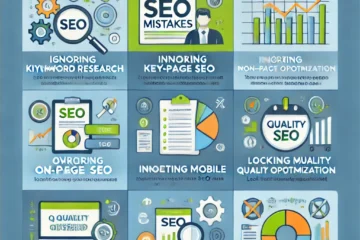What is webpage crawling? When a searchbot or software scans a website for new information on each webpage, it’s called webpage crawling. Why searchbots crawl websites, is to gather new information to add to website indexing. Indexing will only happen, if all search engine guidelines are being met, otherwise an error or warning will be displayed in search console. One important reason for routine Google search console management. SEOs will use software to crawl a website like a searchbot, to display important information related to SEO.
Website crawling is how search engines gather information about all the websites on the internet. Without this task done constantly, manipulation could be done easily. By showing a properly optimized website when the search engine crawler looks, but showing everyone else a different website for users, this is called webpage cloaking. Search engines like Google look at a website in two ways, the way a user would view a website and the way the website communicates with web browsers and searchbots.
Website Crawling Issues
Searchbots can visit a website a vareity of ways, but will only be able to index a webpage if all criteria for proper guidelines for website crawling are met. Lots of issues could prevent searchbots from crawling a website, like the blocking of urls. But most the time the website crawling issues isn’t known, and that’s when it’s time to use Google’s URL inspection tool. Entering the url in question and pressing enter will show you what the issue is. Often webpage crawling issues are 404 pages or a bad 301 redirect rule, with the exception being AMP, which has it’s fair share of issues currently.
Once a website crawling issue has been fixed, for Google, you can validate the fix and Google will send searchbots eventually to take a look and check. This process can take anywhere from a day to a few weeks, so be patient. It’s safe to say, that if it’s taking longer than a few days, there could be other crawling issues preventing the original crawling checks. This is why technical SEO audits are popular, since the amount of conflicts and problem solving needed, is only growing. With more plugins, CMS(s) and 3rd party web tools, the places for a conflict to arise are endless.
Website Crawl Budget
Website crawl rate limiting or also known as crawl budget is when the speed and amount of webpages of a website are crawled by searchbots like Googlebot. If the website is under 500 webpages and normally sees new webpage content ranking in SERPs the day after posting, then crawl budget isn’t something to worry about. Mainly websites with health problems, will prevent searchbots from crawling, and then you have a serious issue, keywords will start to drop and then organic web traffic will begin to fall. Action needs to take place as soon as possible to limit organic traffic decline.
Crawl health plays a big part in website crawling, when websites allow searchbots without any issues server errors or 404 errors, website crawl rate speeds up and more webpages can be crawled and indexed. When website errors exist, searchbots cannot find a clear path to crawl, and either crawl what is clear or will move onto another website. So keeping a website healthy will allow website crawling to be done more often and thus website indexing. So 404 errors aren’t just ugly, they also prevent organic web traffic and keyword rankings. Some of the most basic SEO is to make sure 404 pages are redirected to webpages of relevancy.
If you believe your website is being held back by website crawling issues, contact SEOByMichael for a google search console audit and Bing webmaster tools audit.


